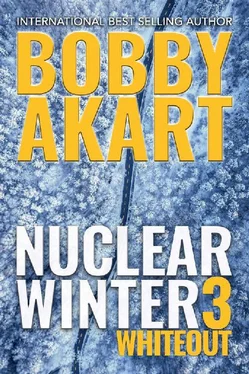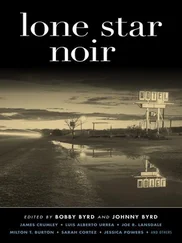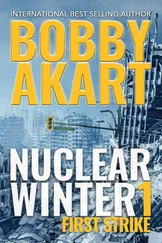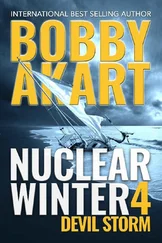“Tucker, what kind of car was that?”
“One of those new Must—” he began before cutting himself off. “Mom, it was a new car. That means Sheriff Mobley was right. There are gonna be other cars now.”
Lacey sighed. Things were about to change, and she wasn’t certain they would be for the better.
Monday, November 4
Mount Weather Emergency Operations Center
Northern Virginia
In the U.S., a law called the Posse Comitatus Act prohibited the domestic use of military for law enforcement purposes without specific congressional authorization. There was another law, the Insurrection Act, which provided the president authorization to use the military under certain circumstances. Throughout American history, the Insurrection Act of 1807 had been invoked on numerous occasions but generally to quell unrest in large urban environments. It’s considered an action of last resort to be used in the event state authorities were unable to give their citizens the protection of law enforcement.
Pursuant to the declaration of martial law, the president was able to invoke the provisions of the Insurrection Act without the input of the states’ governors. Both the governors of Florida and Texas refused to take action as he’d requested. Texas doubled down and ordered the Texas Army National Guard to assist law enforcement to create roadblocks at any road entering the state. Those roads they couldn’t patrol were blocked with concrete barriers and razor wire.
In Florida, the governor set up roadblocks at the state line to ask for proof of residency. He didn’t use the Florida National Guard, as it was occupied tamping down unrest in Miami, Orlando, and the Tampa Bay area. Likewise, the governor of Florida refused to intervene in the actions of the Monroe County government.
The Florida Keys represented a very small part of the state’s population, and their actions didn’t threaten any lives, although the evicted nonresidents argued to the contrary. Nonetheless, he refused to take action, and this angered the president every bit as much as the Texas border issue.
In response to the perceived insolence on the part of the two governors, the president elected to use a show of force to make them capitulate. He sent available troops from regional military bases toward Texas. They were instructed to amass at major highways entering the state as if they planned to invade. Whether that actually came to pass was yet to be determined. He hoped the Texas governor would back down from her quasi-secession attempt.
In Florida, he needed to make an example of the Florida Keys. Across the country, communities and towns were learning of these quasi-secessionist movements so were also following Texas’s lead. Federal highways that passed through towns were being blocked, and travelers, few that they were, had been denied entry. Pockets of rural communities across the southeastern states had armed citizens engaging in hostilities with refugees seeking help. If they weren’t residents, they were told to leave. If they didn’t leave of their own accord, they were forced to at gunpoint.
The president saw this type of activity as lawless, and it ran contrary to the spirit of cooperation he thought the nation needed to help one another through the crisis.
During the daily briefing that morning, Secretary of Agriculture Erin Bergmann was called upon by Chief of Staff Chandler to provide the president some insight into the mindset of these rural communities. She very succinctly equated it to the Helton administration’s position on assisting Israel and India during the outbreak of nuclear war. The president’s duty, similar to that of governors, county executives, and mayors, is to protect the citizens within his charge. Rural communities don’t get the kind of attention large cities do in times of unrest. They had to fend for themselves, she explained.
This honest assessment was the proverbial nail in Erin’s coffin. The president was interested in surrounding himself with yes-men , those who agreed with every one of his proposals. He wasn’t interested in contrarian points of view at the moment. Although Erin responded with her opinion when called upon, following the meeting, the president instructed Chandler to begin looking for her replacement. He hoped, by her forced resignation and expulsion from Mount Weather, other cabinet members who chose to challenge his approach to the governing of the U.S. would fall in line.
He instructed the chairman of the Joint Chiefs to assemble regional strike forces to move into the rural areas of America, where communities tried to isolate themselves from the rest of the nation. They were instructed to open highways, by force, if necessary. If a community failed to cooperate, a larger contingent would be ordered in to sweep the homes for weapons and hoarded food.
As for the Keys, he saw the importance of the southernmost point in the U.S. to the rebuilding effort. Their location in the southernmost latitudes of the country provided an opportunity to grow food and raise livestock. Of course, it would require a colossal effort to remove buildings and hard surfaces to make way for truckloads of topsoil. The Keys would be converted from a tourist mecca to America’s new breadbasket until the clouds of soot and smoke lifted. After that, it could become a national park for all he cared.
The president pulled Chandler into his office and gave the orders. He wanted U.S. military troops from outside of Florida to deal with the problems in the Keys. He’d already dealt with military leaders at Fort Hood and Fort Bliss, who refused to follow orders because their loyalties had shifted to their home state. He ordered the troop contingent to halt the insurrection in the Keys to be deployed from Fort Benning on the Alabama-Georgia border just outside Columbus.
Within hours, the eighty-eight-vehicle convoy of Humvees, troop carriers and logistics support vehicles were traveling down Interstate 75 toward the rally point at Homestead Motor Speedway.
PART VI
Day nineteen, Tuesday, November 5
Tuesday, November 5
Overseas Highway at Cross Key
Florida Keys
It was the middle of the night when Peter entered the stretch of Overseas Highway that connected the Mainland to the Upper Keys. The tiny islands upon which the two-lane divided highway was built were mostly uninhabitable except for the Manatee Bay Club approximately five miles from the point where the boys said the roadblock was set up.
Peter knew the location well. An access road had been built on both sides of U.S. 1 leading to Gilbert’s Resort, a small hotel and tiki bar known for being home to a number of racing catamarans. The access road looped under the highway, so any cars denied access could be directed back toward Homestead.
At this hour, he assumed the road would be desolate. He was wrong. In addition to abandoned vehicles, there were pedestrians walking in both directions. Occasionally, a vehicle would force its way through the throngs of people.
Conversations were had across the concrete divider as those who wanted access to the Keys quizzed those leaving about the requirements to get in. Many tried to develop stories to con their way past the many armed guards who stood vigil at the entrance.
Friend of a friend. Long-lost family member. Dual residency. Been off to college. Lost my license. Identity theft.
The list of excuses for not being able to show photo identification was long. Peter wasn’t sure how he was going to overcome the deficiency. He simply hoped a familiar face would be present. Or, at the very least, someone who knew the Albright family well enough to confirm his story.
Читать дальше












